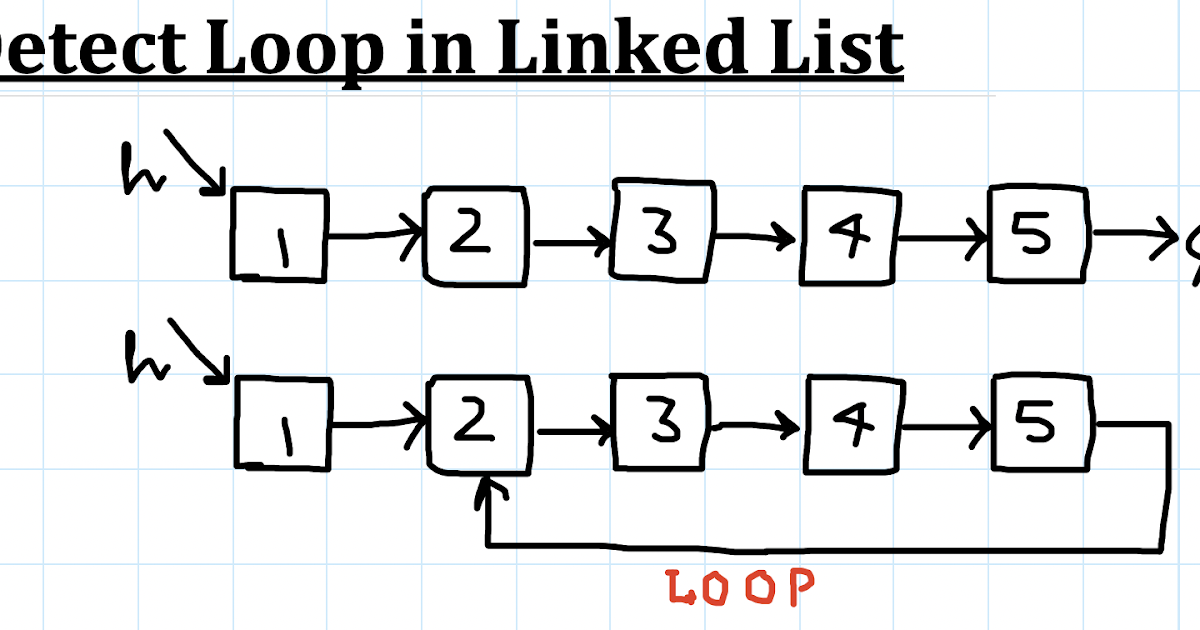Real Tips About How To Detect Loop In Linked List

There are three ways to detect a loop in a linked list.
How to detect loop in linked list. A linked list with cycle causes iteration to fail because the iteration will never reach the end. Next!= null) {// move forward ptr1 by one node. Initially, both the pointers point to the first node in the linked list.
A loop can be detected efficiently using the fast and slow pointer algorithm, where the fast pointer moves by two nodes and the slow pointer move by one node at a time. Here are some methods to detect the loops in a linked list. N = 3 value [] = {1,3,4} x (position at which tail is connected) = 2 output:
This is the fastest method and has been described below: Improve this question. The below diagram shows a linked list with a loop.
If these pointers meet at the same node then there is a loop. If the node is already present in the list, we have a loop. Here, we traverse the list one by one while storing the node addresses in a hash table.
Follow the steps below to solve the problem: In above test case n = 3. Detect loop in a linkedlist class linkedlist { // create an object of node class // represent the head of the linked list node head;
Best algorithm to test if a linked list has a cycle. // connect each node to next node node next; If pointers do not meet then linked list doesn’t have a loop.
How do you detect a loop in a linked list? In this article, we will learn to detect and remove loop in a linked list. As ptr2 is moving with double the speed, it will be ahead of ptr1.
It uses two pointers one moving twice as fast as the other one. First, we will initialize two pointers, i.e., s as a slow pointer and f as a fast pointer. The first pointer run as usual to the next element (like tortoise) by one, but the second pointer moves faster to the next.next element (like hare) by two.
The task is to check if the linked list has a loop. How to determine if a linked list has a cycle using only two memory locations. I used while loop to count and used a check to see.
Intialize both pointers slow = head and fast = head.next.next. Listnode ptr1 = head; The linked list with nodes n = 3 is given.

















